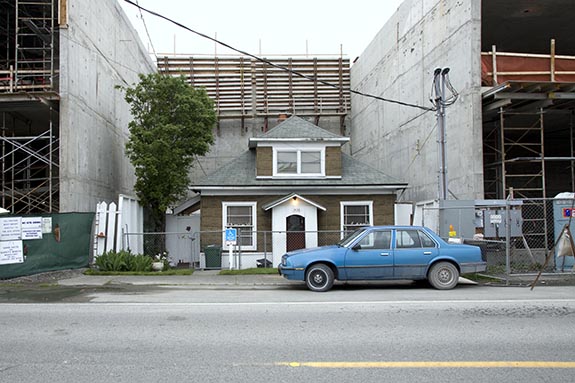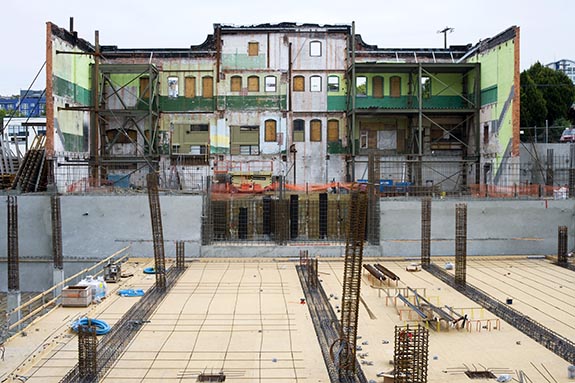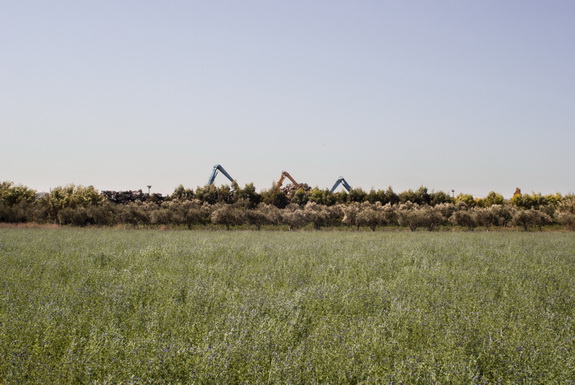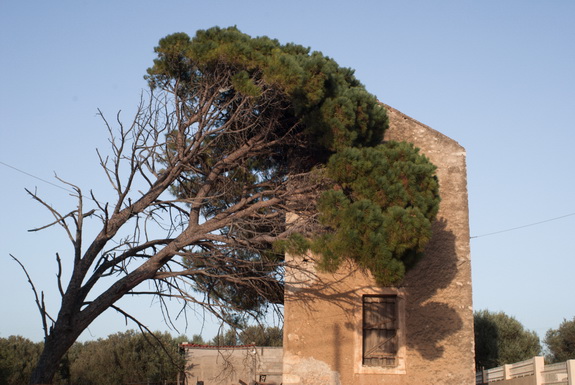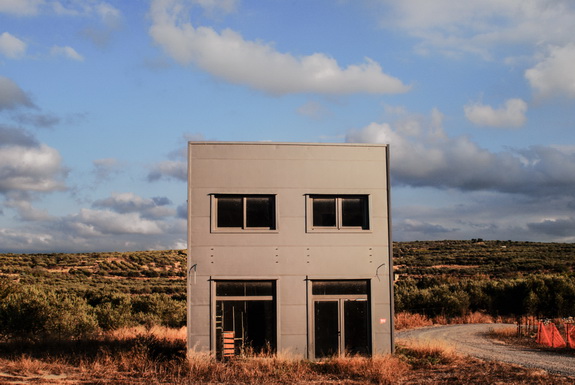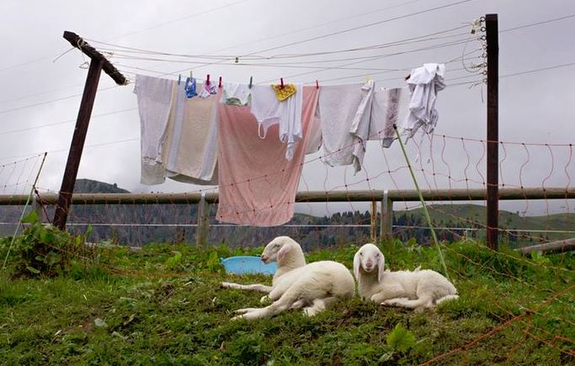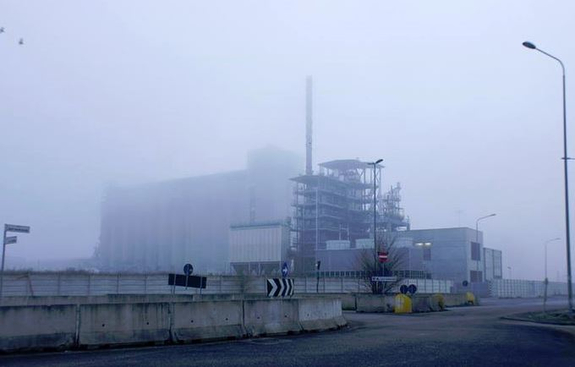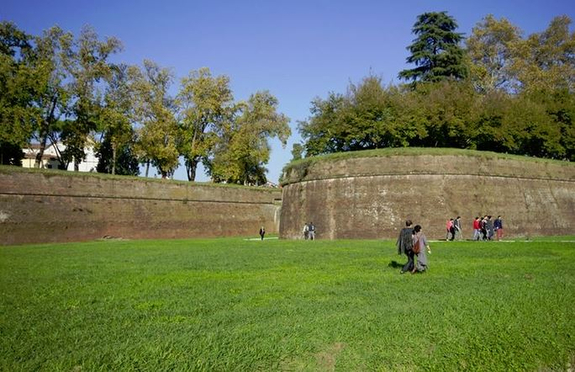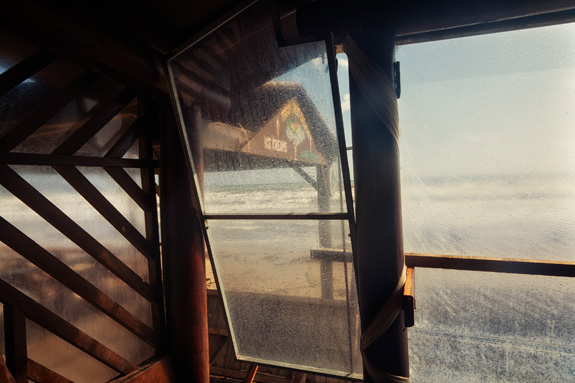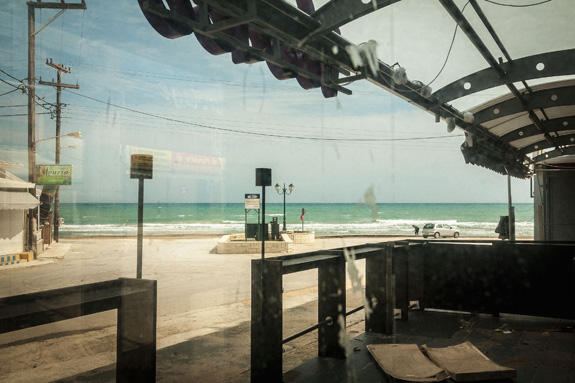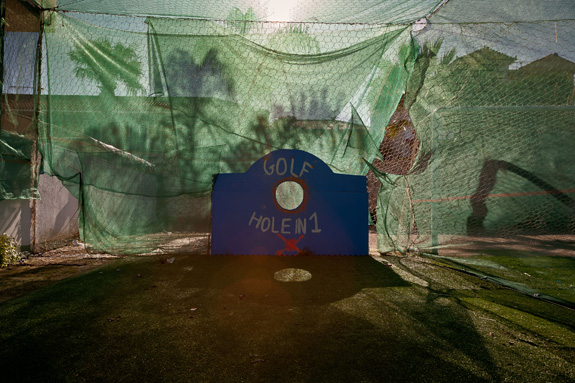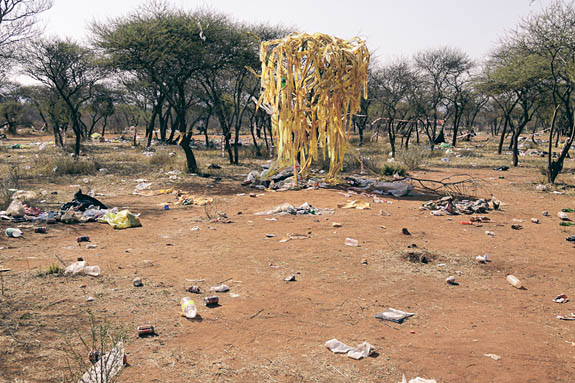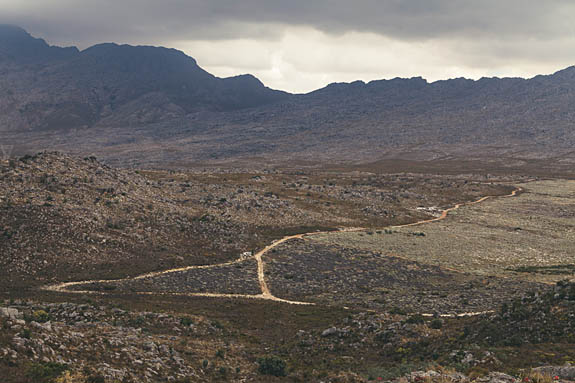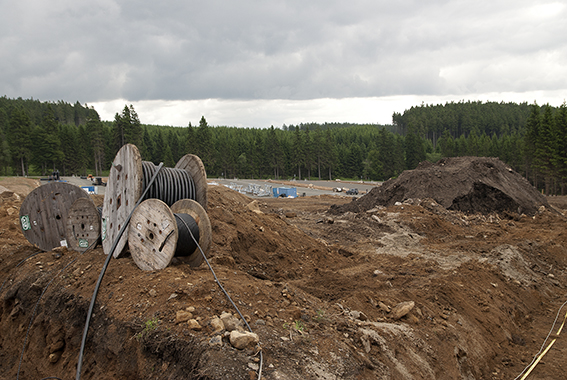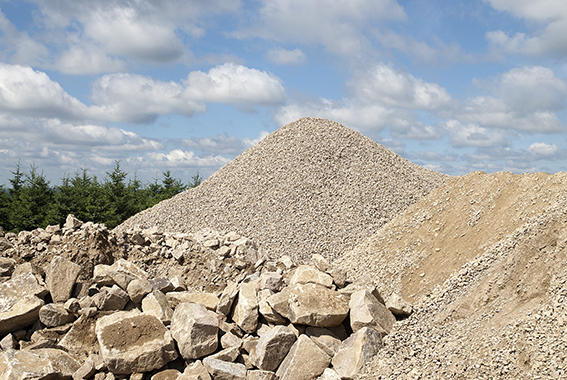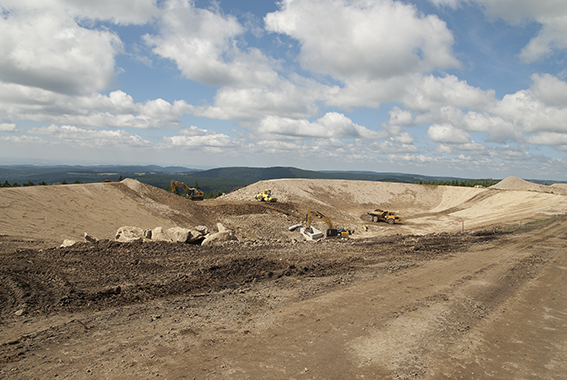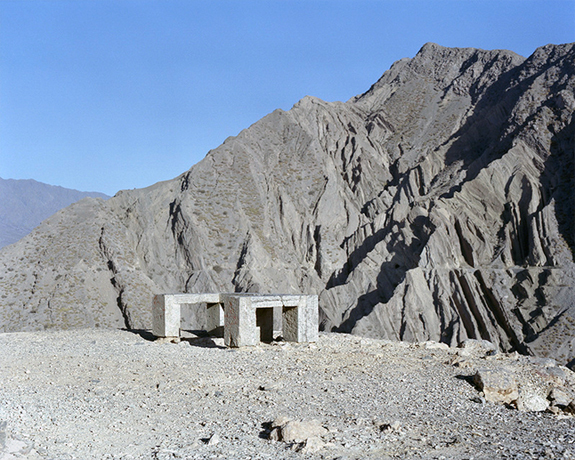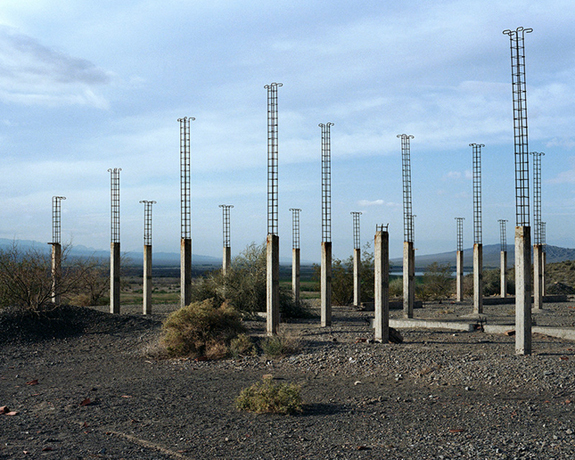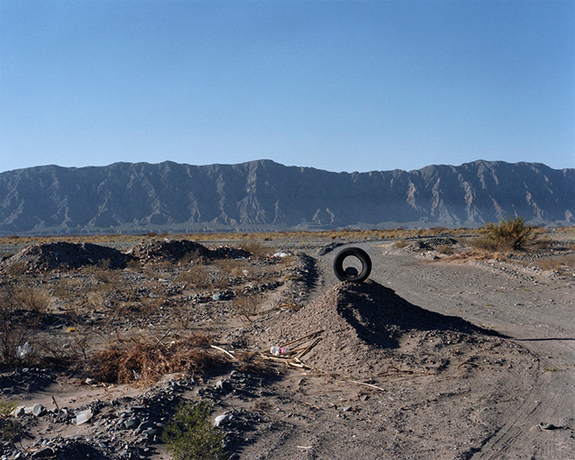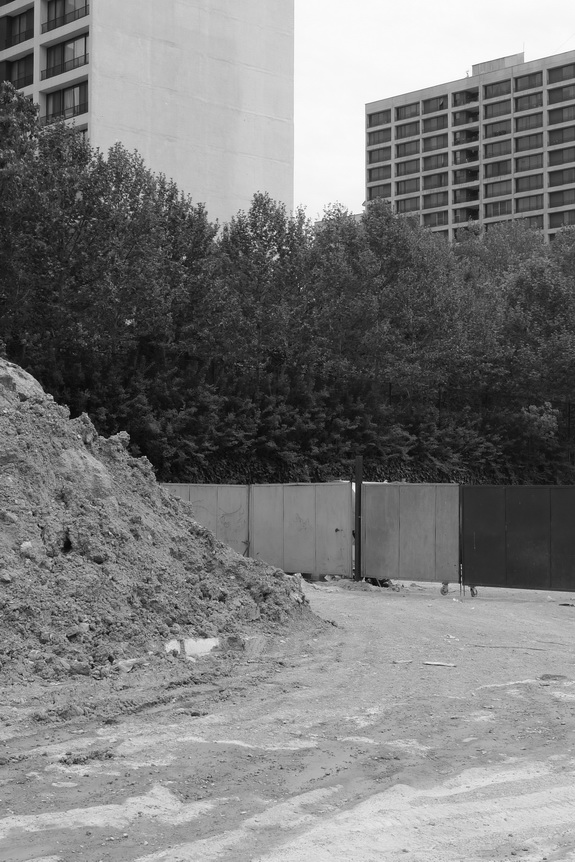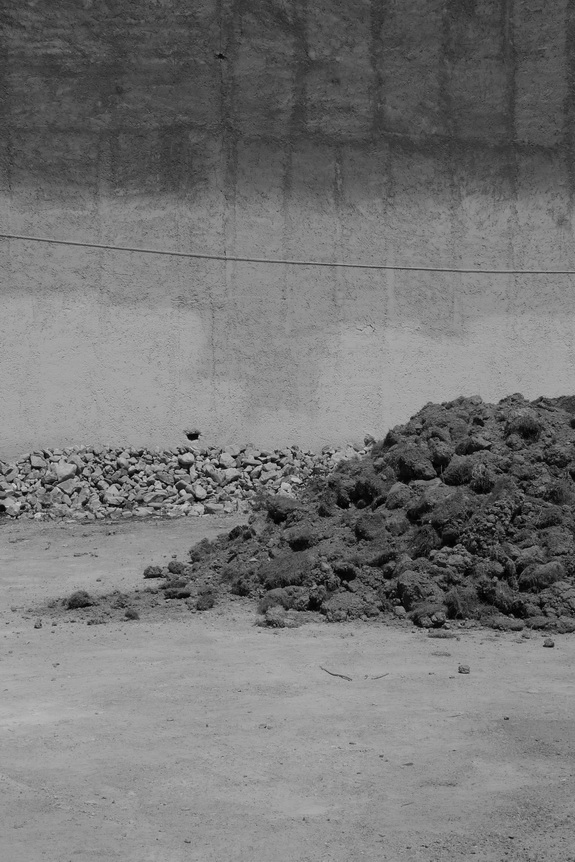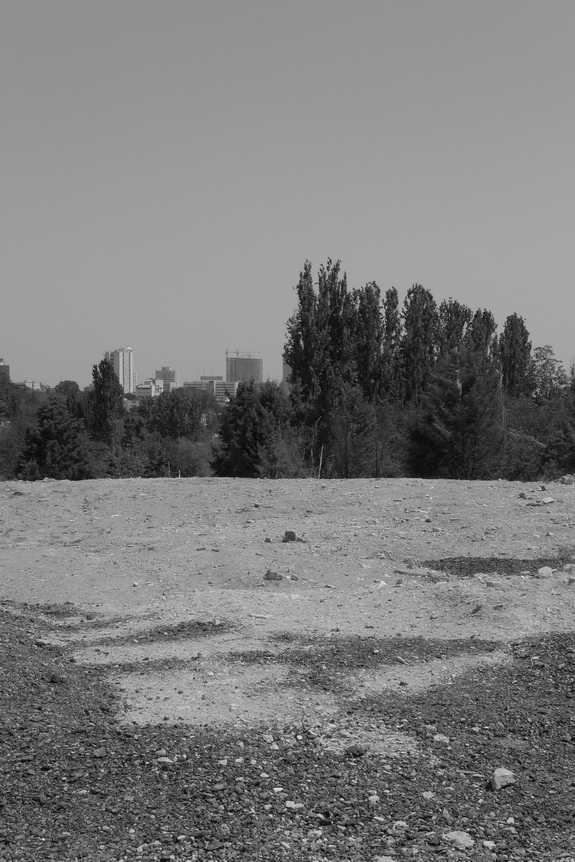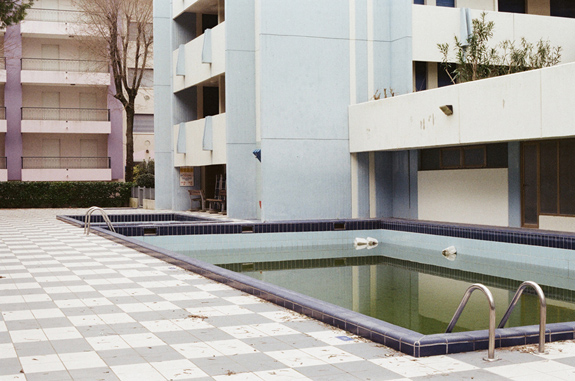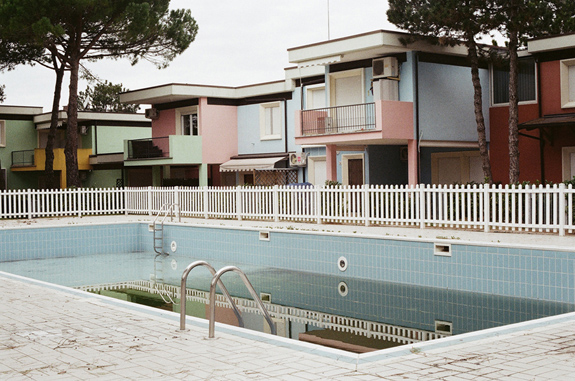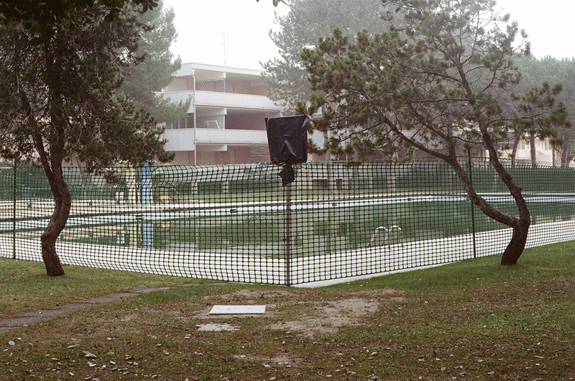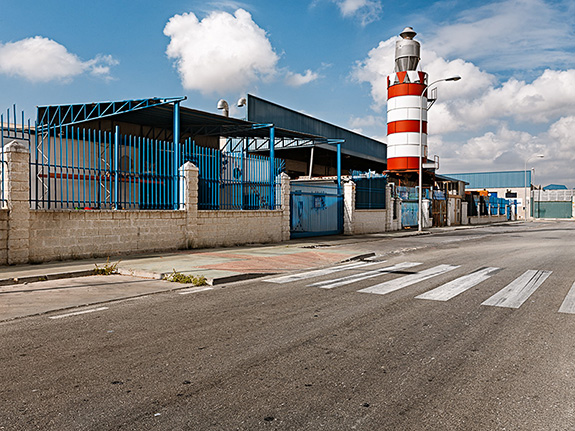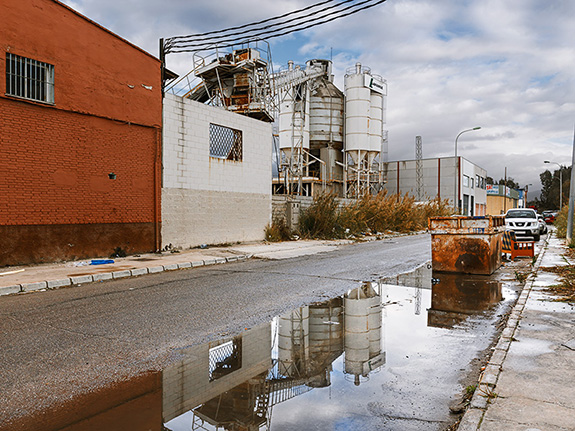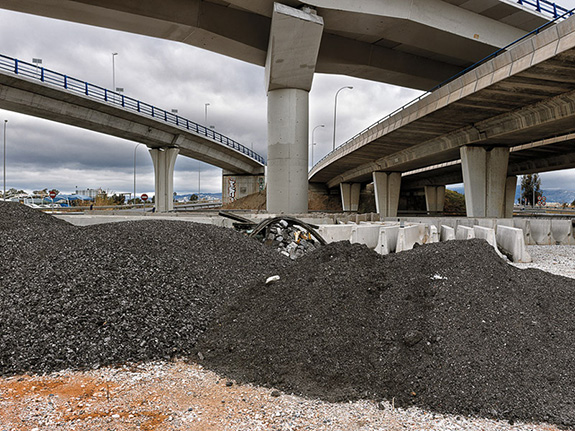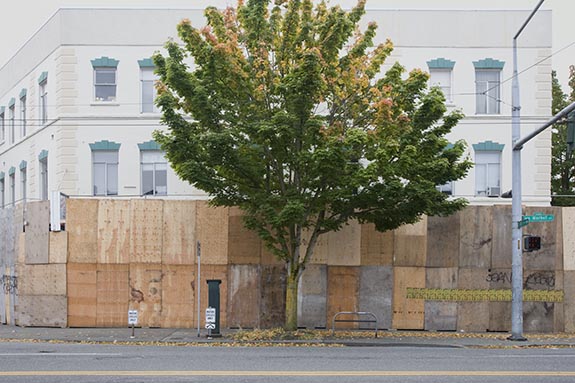
These photos are about the loss of identity in the urban landscape. Our built environment shapes our sense of self, our sense of place and our interactions with others. In cities, buildings are the essence of our collective personality; they are the means through which we enter into contact with a place and with the society that expresses itself in that place.
I began taking these images to document the impact of a new generation of mostly undeterred and monotonous development on our social well-being. In Seattle we’ve experienced a huge transformation over the past five years during which older buildings, sometimes our most visible means of uniqueness that signal a particular neighborhood, have been displaced by metal and concrete boxes that at best have no distinction and quite often have no soul. The new construction is fast and efficient, banal and ubiquitous. It provides new and often unwanted meaning to where we live while taking away from our previous context of how and why we came to live where we do.
— Tim Greyhavens, Seattle, Washington, USA
